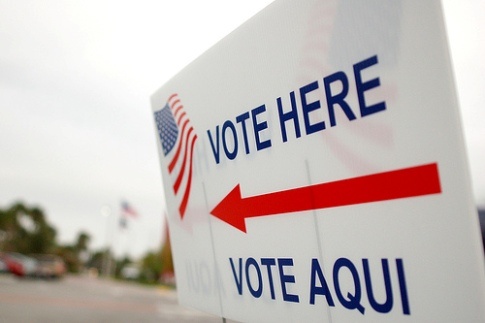Will Latino voters fully flex their voting power in 2012?

This election season, there are two dominant stories about the much-discussed "Latino vote."
One, that President Obama enjoys a strong advantage among Hispanic voters. But two, it may not matter much because, even though Latino communities are growing fast, they have yet to be a major force at the ballot box.
Of the two storylines, the first is difficult to argue. In the last 10 polls of Latino voters, Obama has led Republican Mitt Romney by an average of 67 percent to 23 percent. If Romney were to receive only 23 percent of the Hispanic vote in November, it would be the poorest showing of any Republican over the last 30 years.
Even more surprising, Romney's low marks with Latinos -- likely cemented due to his hard-right turn on immigration during the GOP primaries -- wouldn't improve much even if he chose a Hispanic running mate. For example, a Latino Decisions survey of Florida Latinos found that only 25 percent would be more likely to vote for Romney if he picked Sen. Marco Rubio for VP -- and the data shows many of those were likely Romney voters anyway.
Still, in a state where Obama leads Romney by only two points -- and Obama's current projected vote share is just 50.1 percent of Florida's electorate -- that could be all it takes.
Which leads to the second issue: Will there be enough Latino voters in 2012 to make a difference, especially in battleground states like Florida?
The conventional wisdom is that, despite the dramatic growth of Latino communities, they have yet to fully reach their electoral potential. The first culprit is the registration gap: While Census Bureau records suggest that there are about 21 million eligible Hispanic voters in the country, just over 10 million are currently registered.
The second obstacle is turnout: Hispanic voters who are registered vote at lower rates than other groups. The record-breaking 10 million Latinos who cast ballots in 2008 still amounted to just half of the total registered voters, compared to 66 percent of eligible whites and 65 percent of eligible black voters.
But the official figures may be understating the clout of Latino voters. Even in states that ask voters to identify an ethnic/racial background when they register (not all do), the number of Hispanic voters may be undercounted.
For example, this week Democracy North Carolina released a report [pdf] looking at Latino voters in the sometimes-battleground state. The report's authors point out that N.C. registration forms didn't include a "Hispanic/Latino" classification until 2002, so long-term Latino voters may not be counted. The state also offers an "Other" option, which some Hispanics may be using.
By comparing state voter registration numbers to Census Bureau estimates, the group projects that the actual number of Latino voters is closer to 115,000 in North Carolina -- still under two percent of the electorate, but in a state where the 2008 presidential race was decided by just over 14,000 votes, a hardly insignificant number.
What's more, Democracy North Carolina estimates another 100,000 eligible Latinos have yet to register. And if North Carolina's Latino turnout matches its 2008 rate -- 60 percent -- there's no question it could make a big difference in November.
Tags
Chris Kromm
Chris Kromm is executive director of the Institute for Southern Studies and publisher of the Institute's online magazine, Facing South.
